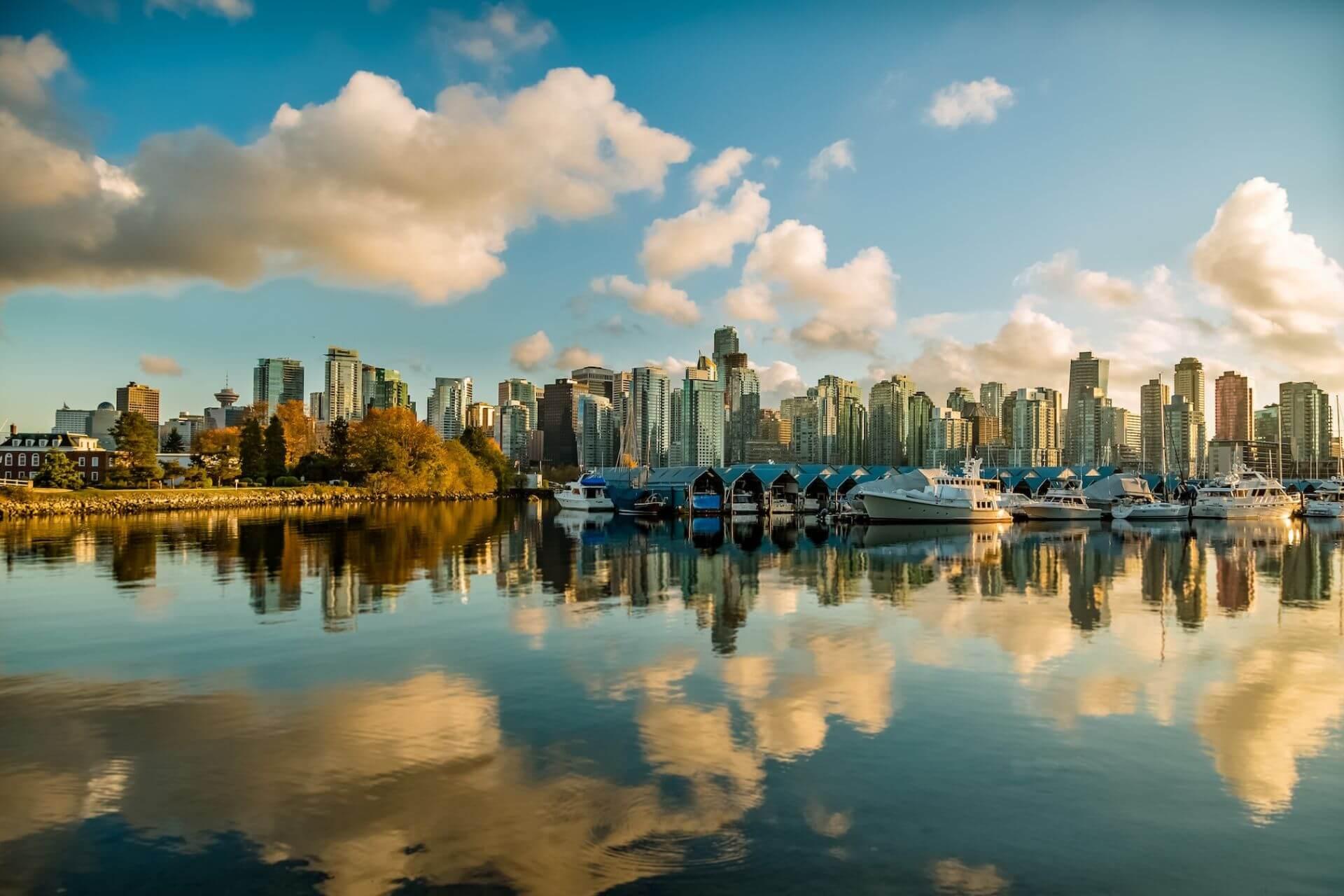Vancouver is one of the most beautiful and vibrant cities in Canada and the world. It lies on the southwest coast of British Columbia, surrounded by sea, islands, rivers and mountains. It is a city of contrasts, where modern architecture mixes with historic neighbourhoods, where cultures and languages meet, and where there are endless opportunities for fun and relaxation. Vancouver is also a city of green and sustainable living, aiming to become the most eco-friendly city in the world.
Geography of Vancouver
Vancouver is located on a peninsula between Burrard Inlet and the Fraser River Delta. Opposite it is Vancouver Island, which is connected to the mainland by ferries. The city covers an area of 115 aquare kilometers and has a population of over 660,000. Together with the surrounding suburbs, it forms the Greater Vancouver metropolitan area, which has a population of more than 2.6 million.
Vancouver has a temperate oceanic climate with an average temperature of 11 °C. Summers are dry and sunny with temperatures around 20 °C, while winters are wet and cold with temperatures around 5 °C. Snow is rare in the city, but common in the nearby mountains.
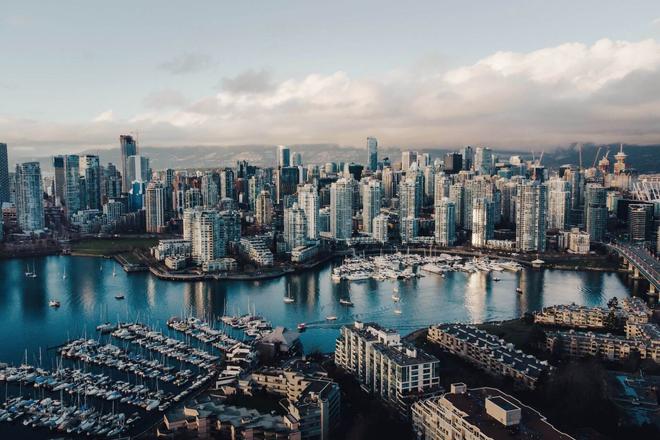
History of Vancouver
Before the arrival of Europeans, the Vancouver area was inhabited by the Squamish, Musqueam and Tsleil-Waututh aboriginal tribes. The first European to explore the area was English Captain George Vancouver in 1792. In 1827, the first Hudson's Bay Company fort was built here under the name Fort Langley. In 1858, the Fraser River Gold Rush began, attracting thousands of adventurers and settlers.
In 1867, the settlement of Granville was established on the banks of Burrard Inlet. In 1884 it was selected as the terminus of the transcontinental Canadian Pacific Railway. In 1886, the settlement was renamed Vancouver and upgraded to a city. In the same year, the town was almost entirely destroyed by a major fire.
Vancouver grew rapidly and developed as an important port and commercial centre. In 1898, the first bridge over Burrard Inlet was opened – the Lions Gate Bridge. In 1914, the Panama Canal was completed, allowing ships to sail from the Atlantic to the Pacific without bypassing South America. This increased Vancouver's importance as an international port and gateway to Asia. In 1929, Vancouver and its neighbouring communities were amalgamated into one city.
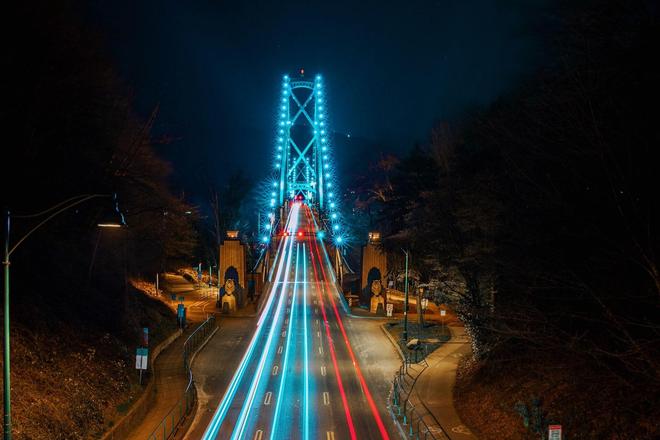
Vancouver has also become a cultural and artistic city. In 1931, the Museum of Anthropology was opened to display collections of Indigenous art and culture. In 1939, the Vancouver Symphony Orchestra was founded. In 1958, the Queen Elizabeth Theatre was built, which is home to opera and ballet. In 1967, the Vancouver Art Gallery was opened, which is the largest art museum in Western Canada.
Vancouver has also become a sports and Olympic city. In 1954, the first Commonwealth Games were held here. In 1976, the first World Hockey Championship was held here, and in 1986, the first World Expo was held here. In 2010, Vancouver hosted the XXI Olympic Winter Games.
Popular tourist attractions
Vancouver offers many attractions for visitors of all ages and interests. Among the most popular are:
Stanley Park: the largest and oldest park in the city, covering 405 hectares. It is an ideal place for walking, biking, picnicking, relaxing and nature watching. The park also has several attractions such as a totem park, an aquarium, a miniature train, a swimming pool and various statues and fountains.
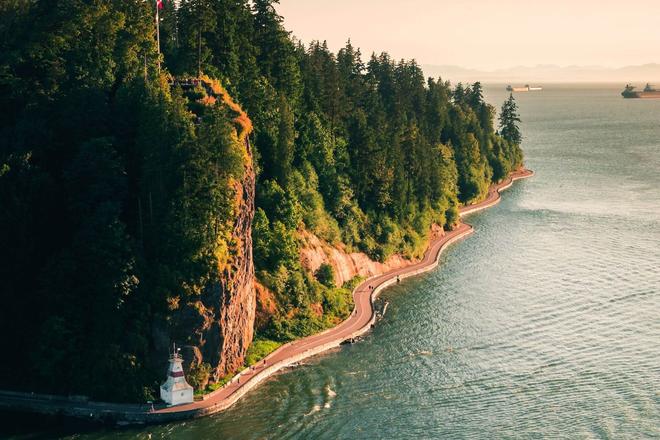
Gastown: a historic downtown district that has retained its original character with stone buildings, narrow streets, gas lamps and carriage houses. It is also a place full of shops, restaurants, bars, galleries and museums. The most famous attraction is the steam clock on the corner of Water Street and Cambie Street.
Queen Elizabeth Park: the second largest park in the city, covering 52 hectares. It is a former quarry pit that has been converted into a beautiful garden with flowers, trees, lakes and fountains. The park also offers spectacular views of the city and mountains. The park is also home to the Bloedel Conservatory, where exotic birds and plants can be seen.
Granville Island: a small island under the Granville Street Bridge, which is known as the cultural and artistic centre of the city. Here you will find a market with fresh food, crafts and specialty foods. You will also find theatres, galleries, studios, schools and museums. From the island, you can also take boat trips on False Creek or English Bay.
Grouse Mountain: this is the mountain above the town that offers year-round fun for nature and sports lovers. In the winter, skiing, snowboarding and ice skating are possible. In summer, you can hike, cycle or take the cable car to the top and enjoy the view of the city and the surrounding area. There are also several attractions on the mountain, such as seeing bears and wolves in the wilderness, a summer bobsleigh run and a mountain cable car.
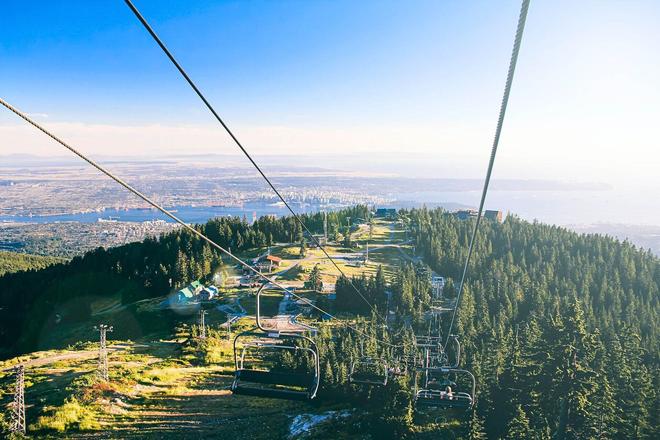
Capilano Suspension Bridge: this is a suspension bridge over the Capilano River that is 137 metres long and 70 metres high. It is one of the oldest and most famous attractions in the city, attracting adventurous visitors. In addition to the bridge, there are other attractions such as the Cliffwalk, Treetops Adventure and the Story Centre.
The most popular museums in Vancouver
There are many museums in Vancouver that are worth a visit. Some of the best include:
The Museum of Anthropology at the University of British Columbia, the most famous museum in the city, exhibiting the art and culture of Indigenous peoples from British Columbia and around the world. Among its treasures are totem poles, statues, masks, canoes and other artifacts.
Vancouver Art Gallery: the largest contemporary art museum in Western Canada, with over 11,000 works in a variety of media. It is mainly known for its collection of paintings by Emily Carr, a famous painter from British Columbia. The museum is located downtown in an impressive neoclassical building.
Science World: a science and technology museum for visitors of all ages. It offers interactive exhibitions, live demonstrations, film screenings and other fun and educational activities. Located in a large metal sphere on the banks of False Creek, the museum is easily recognisable from all sides.
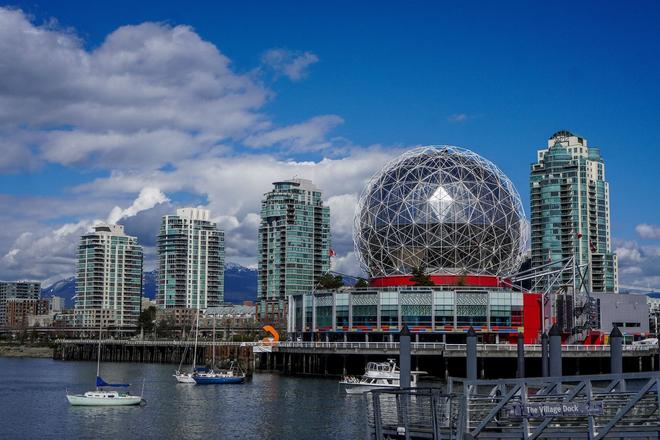
Attractions
Vancouver is one of the most multicultural cities in the world. More than half of its residents are non-native English speakers and more than fifty percent are visible minorities. More than 140 languages are spoken in the city. Common languages in Vancouver include Chinese (including Cantonese and Mandarin), Punjabi, German, Italian, French, Tagalog (Filipino) and Spanish. Several Aboriginal languages are also spoken in Vancouver, but only a small number of people are fluent in these languages. Aboriginal communities and the provincial government are taking steps to protect and revitalise Aboriginal languages.
Vancouver is also one of the most filmmaking cities in the world. After Hollywood and New York, it is the third largest centre of film production in North America. It is sometimes called the Hollywood of the North. Films and TV shows such as X-Men, Deadpool, Supernatural, Arrow, Once Upon a Time and Fifty Shades of Grey have been filmed in the city.
Vancouver is also one of the greenest cities in the world. It has one of the lowest ecological footprints per capita in North America. It also has one of the highest rates of cyclists and pedestrians in Canada.
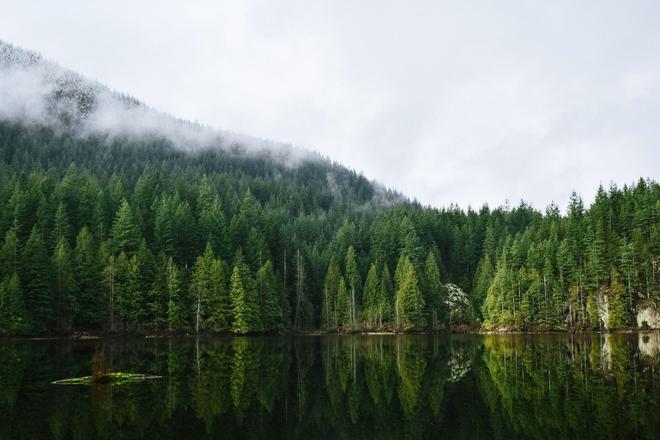
In addition it is also one of the most expensive cities in the world. It has one of the lowest housing affordability ratios in North America. Many people cannot afford to buy or rent a property in the city.
Vancouver is a city that you will not get tired of. Whether you love nature, art, history, science or sports, there is something for you. It is an open and diverse city where you will meet people from different cultures and languages, and is a city that cares about its environment and future. It is certainly a city worth visiting and exploring.
